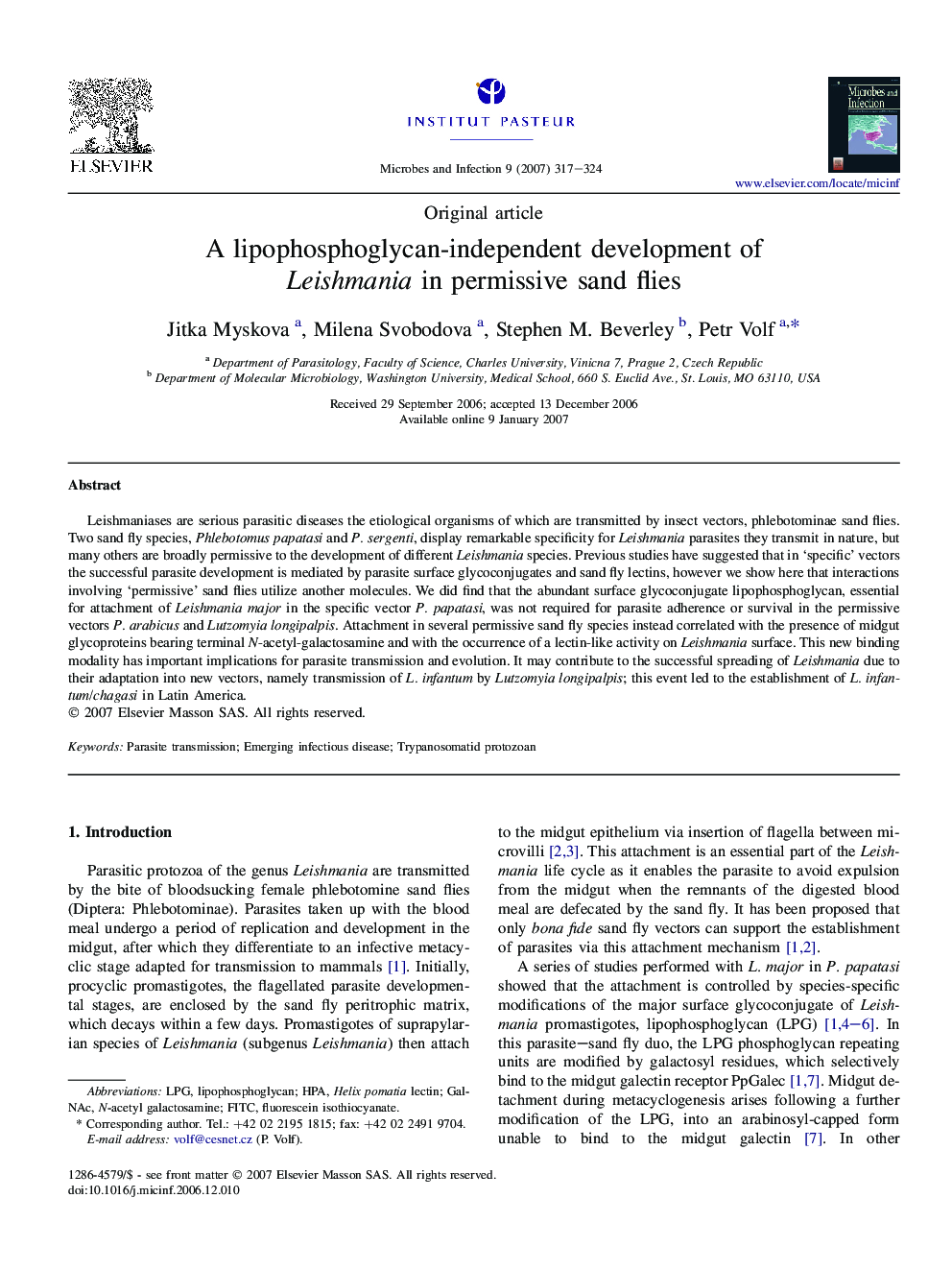| Article ID | Journal | Published Year | Pages | File Type |
|---|---|---|---|---|
| 3415637 | Microbes and Infection | 2007 | 8 Pages |
Leishmaniases are serious parasitic diseases the etiological organisms of which are transmitted by insect vectors, phlebotominae sand flies. Two sand fly species, Phlebotomus papatasi and P. sergenti, display remarkable specificity for Leishmania parasites they transmit in nature, but many others are broadly permissive to the development of different Leishmania species. Previous studies have suggested that in ‘specific’ vectors the successful parasite development is mediated by parasite surface glycoconjugates and sand fly lectins, however we show here that interactions involving ‘permissive’ sand flies utilize another molecules. We did find that the abundant surface glycoconjugate lipophosphoglycan, essential for attachment of Leishmania major in the specific vector P. papatasi, was not required for parasite adherence or survival in the permissive vectors P. arabicus and Lutzomyia longipalpis. Attachment in several permissive sand fly species instead correlated with the presence of midgut glycoproteins bearing terminal N-acetyl-galactosamine and with the occurrence of a lectin-like activity on Leishmania surface. This new binding modality has important implications for parasite transmission and evolution. It may contribute to the successful spreading of Leishmania due to their adaptation into new vectors, namely transmission of L. infantum by Lutzomyia longipalpis; this event led to the establishment of L. infantum/chagasi in Latin America.
